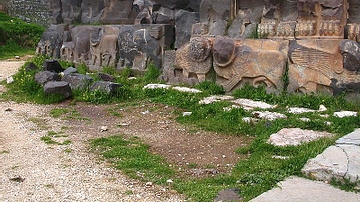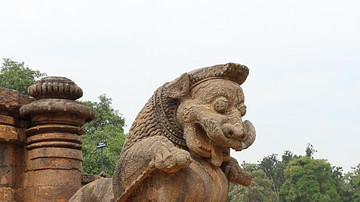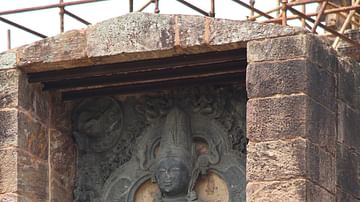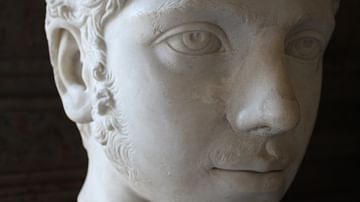Search
Search Results

Image
Ain Dara Temple
The Ain Dara temple is an Iron Age Syro-Hittite temple, located northwest of Aleppo, Syria, and dating to between the 10th and 8th century BC. It is noted for its similarities to Solomon's Temple as described in the Hebrew Bible. The surviving...

Image
Side View of Kinkakuji Temple
Kinkakuji Temple or the "Temple of the Golden Pavilion" was constructed in the 1390s CE as the retirement villa for Shogun Ashikaga Yoshimitsu (r. 1368–1394 CE). While Japan suffered warfare, plague, deteriorating economic conditions, and...

Image
Rampant Lion, Konarak Temple
This is a sculpture found in the Konarak Sun Temple, Odisha state, India. It shows a rampant lion standing upon a crouching elephant, the whole sculpture being supported on a pedestal. Though covered with plaster, the original colour of the...

Image
Temple of Surya, Konarak
The temple of Surya at Konarak (aka Konarak Sun Temple), Orissa, North-east India. It was dedicated to the Hindu sun-god Surya and has 12 pairs of wheels on its sides to imitate the god's chariot which he rides across the sky each day. Built...

Image
Sun God, Konarak Sun Temple
This colossal idol of Surya or the Hindu Sun God stands in the southern niche of the sanctuary at the Konarak Sun Temple, Odisha state, India. The temple was built in the 13th century CE (around 1250 CE) by King Narasimhadeva I (1238 – 1264...

Definition
Religion in the Ancient World
Religion (from the Latin Religio, meaning 'restraint,' or Relegere, according to Cicero, meaning 'to repeat, to read again,' or, most likely, Religionem, 'to show respect for what is sacred') is an organized system of beliefs and practices...

Definition
Caesarion
Ptolemy XV Caesar “Theos Philopator Philometor” (“the Father-loving Mother-loving God”) (c. 47-30 BCE), better known by his unofficial nickname Caesarion or “Little Caesar” in Greek, was the oldest son of Cleopatra VII (69-30 BCE) and was...

Definition
Aeneas
In Greco-Roman mythology, Aeneas is a Trojan prince and the legendary founder of the Romans. He is the son of Anchises, a member of the Trojan royal family, and the goddess Aphrodite/Venus. Aeneas was one of the few Trojan heroes who escaped...

Definition
Minerva
Minerva was the Roman goddess of wisdom, medicine, commerce, handicrafts, poetry, the arts in general, and later, war. In many ways similar to the Greek goddess Athena, she had important temples in Rome and was patron of the Quinquatras festival...

Definition
Elagabalus
Elgabalus was Roman emperor from 218 to 222 CE. Having failed to keep many of his promises to the army, Roman Emperor Macrinus (217 – 218 CE) was becoming increasingly unpopular, and it would only take a little lie from a young boy's mother...